|
|

|
|
|
| Special SciX Conference Edition |
|
 Photo Credit: Studio-Pro/Getty Images Photo Credit: Studio-Pro/Getty Images |
Honoring Leading Spectroscopists
In this special issue of The Wavelength, we focus on the SciX Conference, which is being held this week in Minneapolis. This year's event is particularly important to Spectroscopy, as we present our first Emerging Leader in Molecular Spectroscopy Award, to Matthew Baker, at the Monday plenary. This issue leads with an interview with Baker, and follows with interviews with other scientists who will be receiving awards this week at SciX. |
|
|
|
|
|
|
| The SciX Award Interviews |
|
|
|
|
|
 |
Detecting Disease Pathogens with Surface-Enhanced Raman Spectroscopy
Karen Faulds, a professor at the University of Strathclyde in Glasgow, has been investigating the application of surface-enhanced Raman spectroscopy (SERS) to the detection of disease pathogens, such as meningitis, and to distinguish related pathogens in a complex matrix. She is the 2016 recipient of the Coblentz Society's Craver Award. |
|
|
|
|
 |
Using SERS to Study How Cells Respond to Pharmaceuticals
Colin Campbell of the University of Edinburgh is taking the biomedical application of surface-enhanced Raman Spectroscopy (SERS) to a new level, by using the technique to make spatially resolved measurements in live three-dimensional cell cultures to determine the response to drugs during drug discovery operations. For this work, Campbell received a FACSS Innovation Award at the SciX 2015 conference. |
|
|
|
|
| |
 |
Spectroscopy on Mars: A Look at What's Been Uncovered About the Red Planet
Raymond Arvidson of Washington University in Saint Louis, Missouri, is the winner of the 2016 Lester W. Strock award presented by FACSS. He is involved with the National Aeronautics and Space Administration (NASA) missions to Mars and the spectroscopy incorporated in the instruments sent there. Here, he discusses those techniques, including a hyperspectral imaging system, an emission spectrometer, and an X-ray spectrometer, and what the results of the missions indicate about Mars so far. |
|
|
|
|
|
 |
Addressing the Challenges of Process Raman Spectroscopy
Brian Marquardt, cofounder and CEO of MarqMetrix, Inc., and director and senior principal engineer with the Center for Process Analysis and Control in the Applied Physics Laboratory at the University of Washington, has more than 15 years of experience with process monitoring and control applications in a wide range of application fields, including bioprocessing, pharmaceuticals, food, oil and gas, and oceanography. He recently spoke with us about his research. Marquardt is the winner of the 2016 Charles Mann Award presented by FACSS. |
|
|
|
|
|
 |
Novel Optical Spectroscopy Techniques for Analyzing Nanoscale Structures
Ken L. Knappenberger, an associate professor at Florida State University, is the recipient of the 2016 Coblentz Award. He and his group study electron- and energy-transfer processes in nanoscale systems critical both for investigating fundamental energy redistribution mechanisms in nanoscopic media and for developing new devices based on these systems. They are developing and implementing novel optical spectroscopy approaches. |
|
|
|
|
|
 |
Spectroscopy at the Interface
Paul S. Cremer, a professor of chemistry at Penn State, is the recipient of the 2016 ANACHEM Award. He and his group study a variety of processes that occur at biological interfaces, such as those between drugs and membranes, metal ions and membranes, and water and membranes, using various novel spectroscopy and microfluidic approaches. |
|
|
|
|
|
 |
Innovating Microfluidic Technologies
Amy Herr of the University of California, Berkeley, is the 2016 recipient of the AES Mid-Career Award. She and her team explore the future of biological and clinical research using a combination of chemical engineering, mechanical engineering, and electrical engineering with strong foundations in biology, material science, and analytical chemistry to innovate new microfluidic analytical technology. |
|
|
|
|
|
|
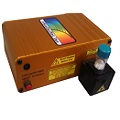 |
 |
| Portable Raman Spectroscopy Solutions |
Radiometric LED Measurement |
The Ramulaser-Vial is a miniature, adjustable Raman laser designed for portability. Rapidly analyze solid, liquid, and powdered samples using StellarNet's instruments and free software. Multiple laser wavelengths are available.
 Learn more Learn more |
Ocean Optics spectrometers and accessories can be configured to measure absolute or relative irradiance of LEDs and other radiant sources, with a variety of optical fixtures, calibrated sources and other tools for convenient measurements.
 Learn more Learn more |
|
|
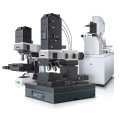 |
 |
| Confocal Raman Microscopes Innovations |
Two Laser Raman better than One |
WITec offers a wide range from advanced though budget-conscious Raman microscopes to high-end instruments at the cutting-edge of technology. The systems provide exceptional optical throughput, signal sensitivity and imaging capabilities.
 Learn more Learn more |
BaySpec's Agility™ is a dual band Raman system ideal for material ID using 1064nm laser excitation to reduce fluorescence and its intuitive software Agile20/20 with 21 CFR Part 11 compliance.
 Learn more Learn more |
|
 |
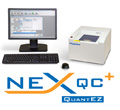 |
| Czitek Introduces The SurveyIR™ |
High performance benchtop EDXRF spectrometer with Windows® software |
SurveyIR™ is a new spectrometer sample compartment mounted FT-IR microanalysis accessory. SurveyIR integrates digital video microscopy with IR microspectroscopy in a user-installed package. SurveyIR features transmission, reflection, and diamond-ATR spectrometry.
 Learn more Learn more |
The Rigaku NexQC+ QuantEZ benchtop Energy Dispersive X-ray Fluorescence (EDXRF) elemental analyzer features the powerful Windows® based QuantEZ software, offering all the functions required for calibration and routine operation.
 Learn more Learn more |
|
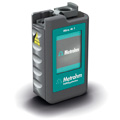 |
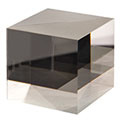 |
| Instant Handheld Raman Analyzer |
Moxtek ICE Cube Beamsplitter |
Integrating seamlessly at all phases of the manufacturing process, Metrohm's Raman analyzer (Mira) provides rapid measurements for identification, screening and confirmation. From raw materials to final product quality control, Mira brings the analysis to the sample.
 Learn more Learn more |
Moxtek's ICE Cube™ is optimized for use over a wide range of acceptance angles while maintaining color uniformity and image contrast in the visible wavelength ranges.
 Learn more Learn more |
|
|
|
|
|
| |
 |
|
